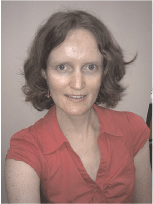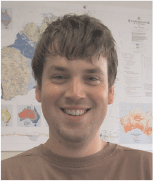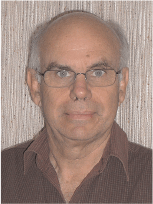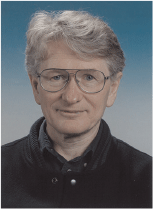Petrophysical properties for CSG reservoirs from 3D imaging at multiple scales
A. Golab A , M. Knackstedt A , T. McKay B , C. Ward C and V. Pinczewski CA Digitalcore.
B Australian National University.
C The University of New South Wales.
The APPEA Journal 52(2) 694-694 https://doi.org/10.1071/AJ11108
Published: 2012
Abstract
CSG reservoirs are intrinsically heterogeneous on every scale and the permeability and producibility of CSG is decreased when the pores and fractures are filled with minerals. The 3D characterisation and quantification of pore connectivity, cleat/fracture aperture and spacing, and extent of mineral infilling in coal is required for CSG reservoir evaluation of gas storage and flow characteristics.
A technique has been developed to determine petrophysical properties of coal using data from a large-field, 3D microfocus X-ray computed tomography (µCT) at multiple scales, combined with SEM imaging, and automated mineralogy by QEMSCAN. µCT is a non-destructive technique and the X-ray densities of coal components are distinct; therefore, the pore/fracture, mineral, and coal matrix can be differentiated and quantified in 3D.
The high resolution 3D image data can then be used to measure petrophysical properties. Specifically, this technique characterises porosity and its connectivity, cleat/fracture networks (aperture and spacing), cleat/fracture permeability, and mineral occurrences in 3D to better describe CSG reservoirs. The technique has been tested on samples of bituminous coal from a number of coalfields in the Sydney and Bowen Basins, Australia.
The samples imaged were from 110 to 114 mm in diameter, yielding voxels ranging from 54 to 63 µm in size. The results can determine the depositional and post-depositional history of coal seams, in coal preparation and use, and in seam gas studies.

Alexandra Golab is a senior geologist with Digitalcore. She holds a BSc (Adv) (honours, class one) in geology and chemistry, and a PhD (geochemistry) (graduated 2003). She has worked as a geoscientist in several sectors including a university, a national research organisation, and an environmental consulting company. She has published one book about CO2 geosequestration opportunities in NSW and numerous journal articles, conference papers, and technical reports about coal, carbonate mineralogy, aqueous geochemistry, soil remediation, and unconventional reservoir porosity characterisation. She is guest editor of a special issue of the Australian Journal of Earth Sciences (AJES) about CO2 sequestration. Member: SPE, FESA. |

Mark Knackstedt is a professor at the Department of Applied Mathematics at ANU and CTO of Digitalcore. He had led a research team at ANU that has pioneered the development of the new image-based core analysis. This technology presents a paradigm shift in the petroleum industry’s approach to core acquisition and analysis. He was an SPWLA distinguished speaker in 2007–08 and 2009–10 and received the George Matson medal from the AAPG in 2009 and the ENI award for New Frontiers in Hydrocarbon Research in 2010. |

Thomas McKay received his BEng (hons) and BSc (hons) from ANU (2010). He is now a masters student at the Department of Applied Mathematics at ANU. His interests include experimental and computational analysis of flow networks and interconnected porosity in non-homogeneous tight reservoir systems. |

Colin Ward is a professorial visiting fellow in the School of Biological, Earth and Environmental Sciences at UNSW. He formally retired as professor of geology at UNSW in 2006 after an academic career of more than 35 years, which included eight years as head of the School/Department of Geology. He is an international authority on the nature, origin, and significance of mineral matter in coal, including the application of mineralogical data to different branches of the coal industry. He is author/editor of several books about coal geology, as well as numerous journal articles and conference papers. He is a former president of the Society for Organic Petrology. In 2010, GSAm presented him with the Gilbert H. Cady Award for a distinguished contribution to coal geology. |

Val Pinczewski holds a BEng (chemistry) and a PhD from UNSW. He is foundation professor and head of the School of Petroleum Engineering at UNSW. His research interests include improved oil recovery, multi-phase flow, and transport properties in porous media and network modelling. His research has focused on the experimental, theoretical, and computational studies of multiphase flow in petroleum source rocks. His experimental work with P.E. Oren at UNSW illustrated the different displacement mechanisms possible during multiphase flooding. He leads both the multiphase flow laboratory and the multiphase modelling group, which focuses on developing advanced pore network modelling tools with predictive capabilities. |
References
Arns, C.H., Bauget, F., Ghous, A., Sakellariou, A., Senden, T.J., Sheppard, A.P., Sok, R.M., Pinczewski, W.V., Kelly, J., and Knackstedt, M.A. (2005a). Digital core laboratory: Petrophysical analysis from 3D imaging of reservoir core fragments. Petrophysics 46, 260–77.Arns, C.H., Bauget, F., Limaye, A., Sakellariou, A., Senden, T.J., Sheppard, A.P., Sok, R.M., Pinczewski, W.V., Bakke, S., Berge, L.I., Oren, P.E., and Knackstedt, M.A. (2005b). Pore scale characterization of carbonates using micro X-ray CT. Society of Petroleum Engineers Journal 10, 475–84.
Golab, A., Knackstedt, M.A., Averdunk, H., Senden, T., Butcher, A.R., and Jaime, P., 2010—3D porosity and mineralogy characterization in tight gas sandstones. The Leading Edge, December, 936–42.
Golab, A., Ward, C.R., Permana, A., Lennox, P., and Botha, P., 2012—High-resolution three-dimensional imaging of coal using microfocus X-ray computed tomography, with special reference to modes of mineral occurrence. International Journal of Coal Geology. Accepted March 2012.
Karacan, C.Ö., and Mitchell, G.D. (2003). Behavior and effect of different coal microlithotypes during gas transport for carbon dioxide sequestration into coal seams. International Journal of Coal Geology 53, 201–17.
Latham, S., Varslot, T., and Sheppard, A., 2008—Image registration: Enhancing and calibrating X-ray micro-CT imaging. International Symposium of the Society of Core Analysts, Abu Dhabi, UAE, 29 October–2 November, SCA2008-35.
Sakellariou, A., Sawkins, T.J., Senden, T.J., and Limaye, A. (2004). X-ray tomography for mesoscale physics applications. Physica A: Statistical Mechanics and its Applications 339, 152–58.
Varslot, T., Kingston, A., Myers, G., and Sheppard, A. (2011). High-resolution helical cone-beam micro-CT with theoretically-exact reconstruction from experimental data. Medical Physics 38, 5459–77.


